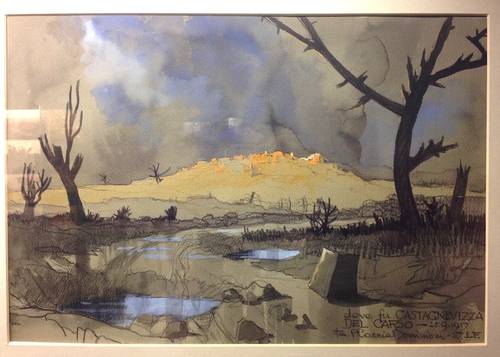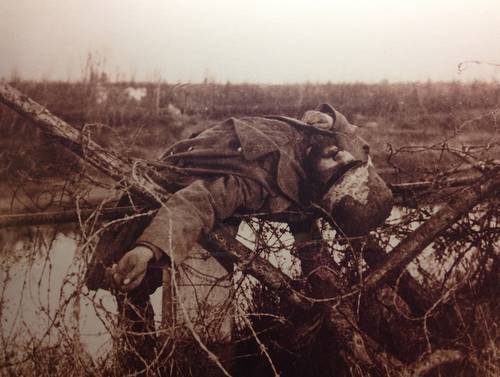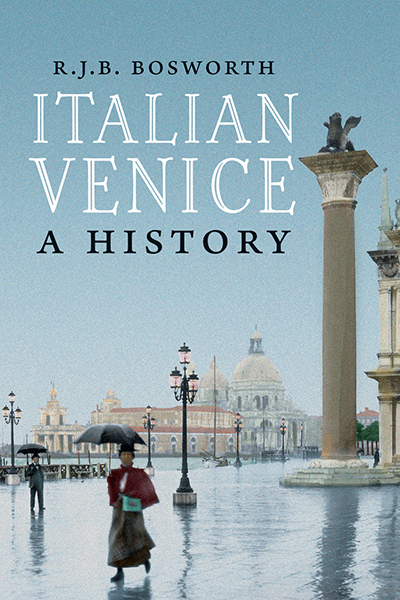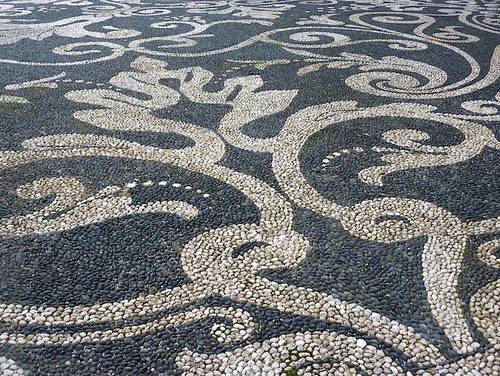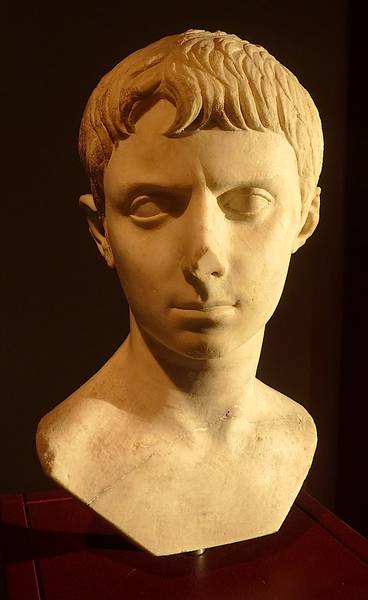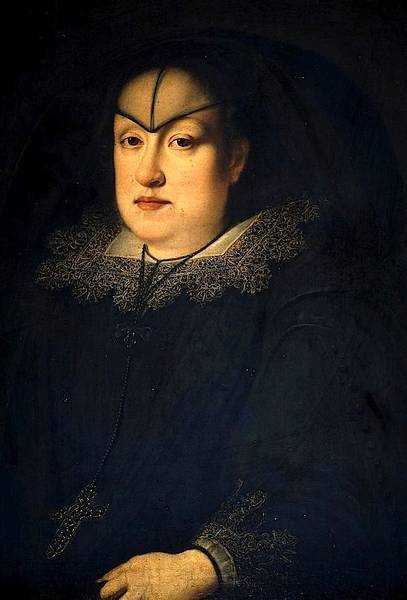R.J.B Bosworth, Italian Venice: A History, Yale University Press, 2014.
R.J.B. Bosworth is addicted to the mingling and competing atmospheres that make up the history of Italian cities. In his book on Rome, Whispering City (reviewed here), he showed how the conflicting pasts of the ‘Eternal City’ were continuously rearranging themselves as one or other faction achieved control over the narrative. Here he applies the same approach to Venice, surveying the city’s history after it was absorbed into mainland Italy in 1866.
Bosworth’s survey is valuable because there is only one full-length English study of Venice’s recent history on the market, Margaret Plant’s Venice, Fragile City 1797–1997, also from Yale (2002). Plant’s is a rich and beautifully illustrated volume, Bosworth’s more penetrating and cynical, and the two together now give the Venice enthusiast a full perspective on a period that has traditionally been neglected in favour of the centuries of Venice’s greatness.
In 1866, the economy of Venice was in a precarious state with the Austrian port of Trieste a major rival for trade. Infant mortality was high and the poor, living on the lower floors of historic buildings, suffered from damp and overcrowding, with employment limited to traditional crafts. In the later 19th century some fresh opportunities were offered by cotton, tobacco and the Stucky flour mill (recently repurposed as the Hilton Hotel), as well as expansion on the mainland at Mestre but the city has never created its own sustainable economy independently of tourism. 31,000 Venetians were unemployed in 1931.
As a result two Venices co-exist throughout this book: the Venice of partying along the Grand Canal and the Venice of an underemployed local population locked in poor housing. While in his rented palazzo on the Grand Canal in the 1920s, the song-writer Cole Porter and his coterie of young Venetians were taking advantage of Porter’s wife’s absence to disport themselves in her dresses and snort cocaine, 40 percent of the population, according to an estimate of 1933, supplemented their diet with molluscs picked at low tide from the polluted rocks and mud. Typhus was endemic.
Yet Venice has always had competing identities. Was the city founded by refugees from Troy and so equal to Rome in antiquity or did it emerge under the patronage of the Virgin Mary on the Feast of the Annunciation in 421? The Patriarch Guiseppe Sarto, later pope Pius X, naturally favoured the latter. When the Campanile in Piazza San Marco collapsed in July 1902 without damaging the Basilica, he soon had a sacred image of the Virgin on the altar as a thanksgiving for her protection. This austere prelate set in place an uncompromising distaste for the frivolity of life in the palazzi of the Grand Canal. Yet once canonised, the visit of his embalmed body to Venice brought out massive crowds as it made its way up that same canal in a vessel rowed by eighteen oarsmen in 18th-century dress. Bosworth does well to remind us of the persistent Catholicism of a city that has provided three recent popes from its patriarchs.
One patriarch, Adeodato Giovanni Piazza, appointed in 1935, proved an adept supporter of the Fascist regime, celebrating its victories, applauding the alliance with Nazi Germany and mixing quotations from Mussolini with those of the gospels. Obsessed with swearing and the lascivious dress of women, Piazza was upstaged by the city’s most successful industrialist, former governor of the conquered Libya and Minister of Finance, Giuseppe Volpi, whose flaunting of Fascist culture in the shape of music and film festivals as well as the well-established Biennale, allowed him to claim that Venice was the vetrina or showcase of Italy and himself as ‘the last doge’. With such flamboyant propagandists for the regime, it was disappointing that police reports (well exploited by Bosworth) repeatedly showed the refusal of the city’s population to take on board, or even to understand, the transformation in attitudes required of them. When an attempt was made to exclude the polite, traditional lei, and replace it by the more militant voi, the gondoliers robustly replied that the language taught to them by their mothers was quite good enough. Eighty percent of the city’s Jews survived the war, many concealed by their neighbours.
As Mussolini’s regime crumbled, there was much reshuffling of allegiances. Venice had suffered badly in the First World War, bombed, and almost captured after the disastrous Italian defeat at Caporetto in 1917. The Second World War was ignored as much as possible and the façade of Fascism quickly abandoned on Italy’s surrender. Between January 1943 and January 1944, membership of the local Fascist party tumbled from 88,000 to 4,000. It was as if an acqua alta had receded without leaving much debris. Volpi was especially adept. Briefly imprisoned because of his adherence to Fascism, his contacts got him out of prison. Escaping to Switzerland, he then bought himself back to respectability by a large donation to the Resistance movement and the handing over of his newspaper, Il Gazzettino, to the Christian Democratic Party. The US general Mark Clark obligingly praised the city for its resistance to Fascism and its transfer of its facilities to the liberators intact. A bronze statue of La Partigiana, ‘the [female] partisan’, near the Giardini, now commemorates the successful resistance of the city to Fascism and Nazism.
The pressures are immense, even if a canny survivor, Massimo Cacciari, mayor of the city in 1993–2000 and 2005–2010, a former Communist philosopher who championed free enterprise once in power, proved able to manipulate them. However, the factions that support or oppose any attempt to change the fabric of the city, from the Calatrava Bridge to the Fondaco dei Tedeschi shopping centre, create the image of a petrified city edging, as often before in its history, towards extinction. The weight of the traditional refrain, com’era e dov’era, ‘how it was and where it was’, still grips Venice, supported not least by its more romantic visitors. Polly Coles’s Venice and the Politics of Washing (reviewed here) evokes the harassed lives of the remaining inhabitants. ‘Only God can now save us,’ remarked the former Marxist Cacciari.
In a concluding meditation, Bosworth notes how the primary narrative of the city’s past denies its contemporary history by focusing too heavily on a supposed past period of greatness (to which optimists believe the city can return). Perhaps in a tourist city, where so much energy is diverted to extracting profit from its visitors, this is inevitable; but Bosworth’s sober perspective is an important and informative one that can only add to a greater understanding of a city that risks being suffocated as much by literary gush (some fine examples quoted by Bosworth in his Introduction) as by the acqua alta.
Meanwhile behind all the cosmetic changes lurks the cumbersome and vastly expensive MoSE barrier, its completion long promised. The world waits to know whether it will solve the problems of flooding or, as some sceptics suggest, simply trap the river waters that run into the lagoon. The patriarch had better keep his sacred statues of the Virgin Mary at the ready.
Reviewed by Charles Freeman, historical consultant to the Blue Guides and author of the Historical Introduction to Blue Guide Venice.
